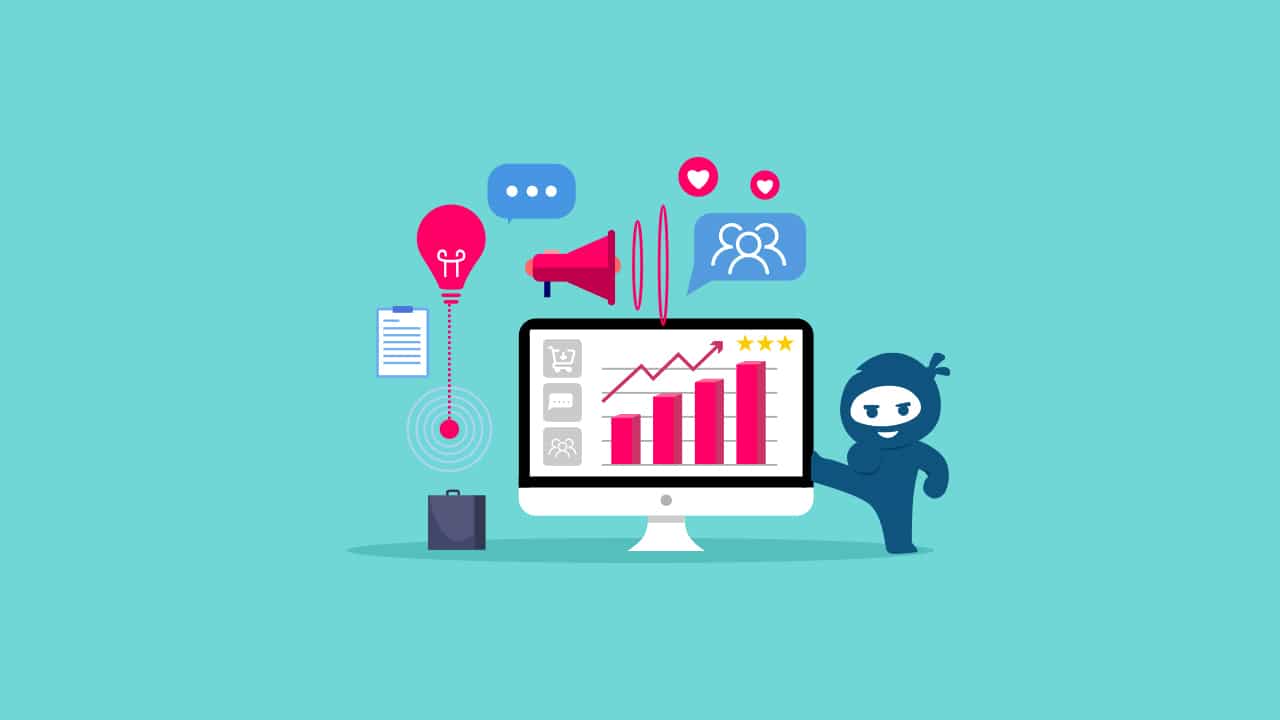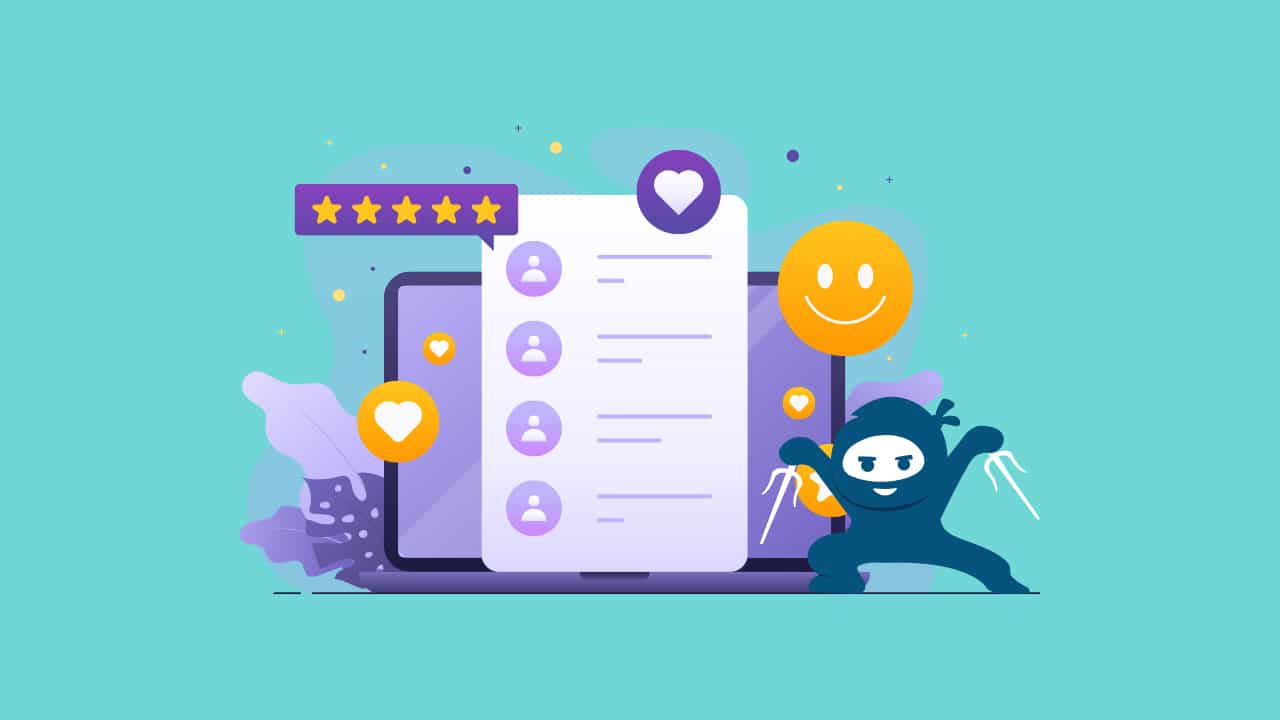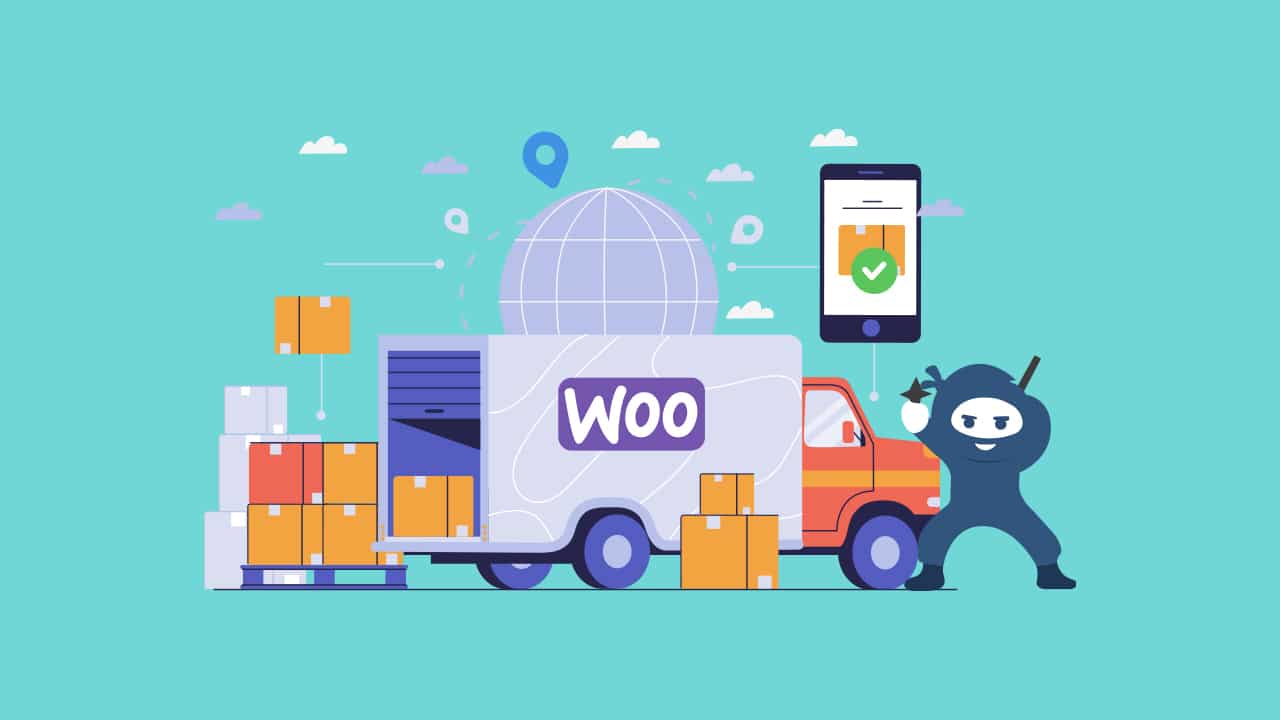WooCommerce is the go-to platform for entrepreneurs and businesses, providing a seamless and customizable environment for online stores. And not only is it an ideal solution for consumer-oriented eCommerce operations, but also for B2B.
If you have already harnessed the potential of WooCommerce to set up your B2B store, you are on the right track. But what is the secret to skyrocketing your success in the competitive B2B arena?
To make your online business thrive and have prominent manufacturers and industry leaders on your list, you need effective B2B marketing strategies tailored specifically for your WooCommerce store.
In this blog, we will delve into practical strategies that have propelled businesses to remarkable heights. Let us get started!
Crafting and Implementing Effective Marketing Strategies
A marketing strategy is a comprehensive plan explicitly formulated to achieve the marketing objectives of an organization. It provides a blueprint for attaining these marketing objectives. It is the building block of a marketing plan. It is designed after detailed marketing research and helps an organization concentrate its resources on the best possible opportunities to increase sales.
Implementing a marketing strategy involves developing detailed plans of action that outline precisely how strategies will be implemented to achieve the goals in the marketing plan. This includes identifying the target market, creating a product line or service that appeals to this group, and promoting the product or service in a way that encourages the target market to purchase it.
The implementation process can be broken down into several steps:
Setting Goals
The first step in implementing a marketing strategy is setting clear, measurable goals that align with the business’s overall objectives.
Identifying Target Market
The next step is identifying who your target market is. Here, you research and understand your audience’s needs, wants, and behaviors.
Developing a Marketing Mix
Now, decide on the right combination of product, price, place, and promotion (the 4Ps) to reach your target market effectively.
Creating a Marketing Budget
Determine how much money can be allocated to each part of your marketing mix.
Executing the Plan
It is time you put your plan into action. This could include launching a new product, running advertising campaigns, or starting a content marketing strategy.
Monitoring and Adjusting
Once your plan is in action, it is essential to monitor its progress and make adjustments as necessary. This involves tracking key performance indicators (KPIs), conducting customer surveys, or analyzing sales data.
Top 10 Proven Marketing Strategies for B2B WooCommerce
Staying ahead of the curve requires innovative strategies and a keen understanding of your market. We have curated a list of the top 10 effective WooCommerce marketing strategies that have proven successful for numerous businesses.
Whether you are a seasoned WooCommerce store owner or a newbie just starting, this list will provide a comprehensive guide to elevate your B2B marketing game. So, without further ado, let us dive into it!
A Highly-Functional Website
Your website is your business card and the most valuable salesperson, working tirelessly 24/7 to make an impact. It is the first point of contact for potential clients, making it crucial to have a robust and SEO-friendly website.
Imagine you are visiting a physical store, and the aisles are cluttered, products are disorganized, and there are no signs to guide you. You would likely leave in frustration.
The same applies to your online store. A successful B2B website needs to be professional, trustworthy, and informative. It should provide valuable information to potential clients and help establish relationships with them. Ensure a clean, intuitive, organized layout that guides visitors effortlessly through your product offerings.
Here is how you can achieve it:
- Mobile-friendly
With the majority of users accessing websites from mobile devices, it is crucial to optimize your WooCommerce store for mobile. A responsive design ensures that your site adapts seamlessly to various screen sizes, providing a consistent and user-friendly experience.
- Speed
Slow-loading WooCommerce pages can deter potential customers. Use tools like Google PageSpeed Insights to identify and rectify performance bottlenecks on your website.
- Search Engine Optimization (SEO)
A beautifully designed website is useless if no one can find it. Implementing strong SEO practices ensures your store ranks well on search engines and drives organic traffic.
- Security
Assure your customers of their data’s safety by implementing SSL certificates and robust WooCommerce security measures to protect against data breaches.
- Streamlined Checkout
Simplify the checkout process with easy-to-fill forms, multiple payment options, and guest checkout functionality. Don’t know where to start? Here are some common WooCommerce checkout mistakes you should avoid.
Optimize Your WooCommerce Store for Wholesale Buyers
While your WooCommerce store caters to various customer segments, wholesale buyers represent a unique and often lucrative market. Catering to the individual needs of wholesale buyers is crucial. Optimize your WooCommerce store to provide a seamless and efficient shopping experience for these buyers.
Wholesale buyers often purchase in bulk and may require special pricing or shipping arrangements. Therefore, your website should be equipped to handle bulk orders and offer tiered pricing based on quantity. It should also provide options for custom shipping and delivery arrangements.
Moreover, the website should offer features like quick order forms, SKU search, and the ability to repeat previous orders. These are particularly useful for wholesale buyers who often know what they want and need to place orders quickly and efficiently.
Assign a dedicated account manager or support team to handle wholesale inquiries and assist with complex orders. Offer multiple communication channels to make it easy for them to reach you.
Offering Wholesale Discounts
In the B2B sector, wholesale discounts are a powerful tool for attracting and retaining customers. By offering discounts on bulk purchases, you can incentivize customers to buy more from your WooCommerce store.
Wholesale discounts can be structured in various ways. You could offer a flat discount on all bulk purchases or a tiered discount system where the discount percentage increases with the quantity purchased.
Offer discounts based on the quantity of individual products purchased. For example, buying ten units of a product might yield a different value than buying 100 units.
You can also offer seasonal or promotional discounts to boost sales during specific periods.
It is vital to ensure that your discount strategy is sustainable and does not compromise your profit margins. You should also clearly communicate your discount policies to your customers to ensure everything is clear.
Allow for negotiation with large-scale wholesale buyers, especially for custom orders or unique circumstances. Flexibility in pricing can lead to long-term partnerships.
To effectively implement the wholesale discounts strategy in your WooCommerce store, you can use various plugins like Wholesale Prices Premium to simplify the process.
Story-Driven Product Pages With Compelling Visuals
In B2B marketing, product pages play a pivotal role in driving sales. To stand out and engage your audience, it is essential to create product pages that tell a compelling story and utilize visually appealing elements.
A well-crafted, visually appealing product page can tell a compelling story about your product, making it more attractive to potential customers. This is especially important for B2B customers, who often need to understand the full context and benefits of a product before making a purchase.
Here is how to implement this strategy effectively:
- Product Descriptions with Narrative
Craft product descriptions that go beyond technical specifications. Tell the product’s story – its origin, how it solves a problem, and the value it brings to the customer’s business. Use storytelling to create an emotional connection.
- High-Quality Images and Videos
Use high-resolution images and videos that showcase the product from different angles, demonstrate its functionality, or provide virtual tours. Visual content helps buyers understand the product better.
- Customer Testimonials and Case Studies
Incorporate customer testimonials and case studies on the product pages. Real-life success stories and positive feedback build trust and provide social proof.
- Interactive Features
Implement interactive elements like 360-degree product views, infographics, or product configurators to engage users and help them visualize the product’s features.
- Benefits and Features Highlight
Clearly outline the key benefits and features of the product in an easy-to-scan format. Use bullet points, icons, or concise descriptions to make the information accessible.
- Product Comparisons
Include tools or tables that allow customers to compare different products or product variants, helping them make informed decisions based on their needs.
Harnessing the Power of Email Marketing for Promotions
Email marketing is a powerful tool in the B2B marketing arsenal, particularly regarding promotions. It lets you reach your customers directly, providing personalized offers and updates that drive engagement and sales.
Promotional emails can take many forms, from announcing new products or services to offering special discounts or exclusive deals. The key is to make these emails relevant and valuable to your customers. Segment your email list based on customer behavior or preferences and tailor your promotional messages accordingly.
Moreover, email marketing allows for detailed tracking and analytics. You can monitor open rates, click-through rates, and conversions to understand the effectiveness of your promotional campaigns and make necessary adjustments.
Here is a detailed look at how to implement effective email marketing campaigns:
- Build a High-Quality Email List
The foundation of successful email marketing is a high-quality, segmented email list. Ensure you collect and maintain email addresses of interested B2B prospects and customers.
- Segment Your Email List
Divide your email list into different segments based on criteria such as industry, purchase history, or engagement level. Segmentation enables you to send highly targeted and relevant content.
- Create Compelling Content
Craft well-designed and engaging email content. Highlight product promotions, special offers, or value-added resources that your B2B audience will find beneficial.
- Personalize Your Emails
Personalization is key. Address recipients by their name and tailor the email’s content to their specific needs and interests.
- Use Eye-Catching Visuals
Incorporate visually appealing elements, such as images, infographics, and product photos, to make your emails visually engaging.
- Provide Clear Calls to Action (CTAs)
Include clear and compelling CTAs that direct readers to take the desired action, whether to purchase, request more information, or download a resource.
- Monitor and Analyze Results
Use email marketing software to track the performance of your email campaigns. Analyze open rates, click-through rates, conversion rates, and other metrics to refine your strategy.
Case Study
Consider the case of a B2B company, Agisko, that harnessed the power of email marketing to schedule over 70 sales calls in just one week. They crafted compelling promotional emails that not only announced their services but also offered exclusive deals for their subscribers. By segmenting their email list and personalizing their messages, they could engage their customers effectively and drive significant sales.
Participating in Events and Trade Shows
In B2B marketing, personal connections and networking play a crucial role. Attending events and trade shows can be an effective way to promote your B2B WooCommerce business. These platforms provide an opportunity to showcase your products or services, connect with potential customers, and learn about the latest trends in your industry.
At these events, you can set up a booth or stall to display your products, offer live demonstrations, or even provide samples. Have potential customers experience your offerings firsthand, which can be more impactful than any online description or image.
Moreover, trade shows and events allow you to network with other businesses in your industry. You can learn from their successes and challenges, discover potential partnerships, and stay updated on industry trends.
In addition, here are some tips to make your visit more impactful:
- Invest in an attractive booth or exhibition space that represents your brand professionally. Ensure your booth design, marketing materials, and product displays are eye-catching and informative.
- Train your team to engage with event attendees effectively. Have well-prepared elevator pitches, product demonstrations, and answers to common questions.
- Use technology, such as QR codes and lead capture apps, to gather contact information from potential leads. Make sure to follow up promptly after the event.
- At events, offer exclusive discounts, promotions, or early access to new products. Incentivize attendees to make purchases or sign up for your services.
Implementing a Referral System
Referral systems are a powerful marketing tool, particularly in the B2B sector. They leverage the trust and relationships your customers already have with their peers to attract new customers to your WooCommerce store.
A referral system incentivizes your existing customers to refer their friends, colleagues, or business partners to your store. These incentives could be discounts, free products, or other rewards. The referred customers may also receive a bonus, such as a discount on their first purchase.
Implementing a referral system in your WooCommerce store can be done using various plugins. These plugins allow you to set up and manage your referral program, track referrals, and distribute rewards.
Have a look at how you can design a referral system that works:
- Create a clear and structured referral program with incentives for the referrer (the existing customer) and the referred (the new customer). This can include discounts, cash rewards, or exclusive offers.
- Make the referral process easy and user-friendly. Provide a dedicated section on your website or within your WooCommerce store for customers to initiate referrals.
- Communicate the benefits of your referral program to your existing customers. Use various channels, including email, social media, and in-store signage, to spread the word.
- Implement automation within your WooCommerce store to make the referral process seamless. Use referral software or plugins to manage and track referrals.
- The success of your referral program often depends on the attractiveness of the incentives you offer. Consider offering tiered rewards where the referrer receives incredible benefits as they refer more customers.
Case Study
Consider the case of Google’s G Suite. Despite being backed by one of the world’s most popular search engines, they implemented a referral program to spread the word about their suite of productivity tools. They incentivized new users with cash for each person who signed up using the program participant’s link. As of 2017, this referral program helped grow the suite to include three million paying businesses and 70 million G Suite for Education users.
Enhancing Customer Service
Exceptional customer service is a cornerstone of success in B2B marketing. In the highly competitive world of WooCommerce stores, offering top-notch customer service can set you apart from the competition and lead to customer loyalty and advocacy.
Improving customer service can involve several strategies:
- Quick Response Time
Ensure that customer queries are addressed promptly. Aim to respond to customer inquiries, whether through email, phone, or live chat, as quickly as possible. Set up automated responses for common queries or ensure that your customer service team is adequately staffed to handle the volume of questions.
- Knowledgeable Support Staff
Train your customer service team to have a deep understanding of your products or services. They should be able to answer technical questions, offer guidance, and provide solutions effectively.
- Personalized Support
Tailor your support to the specific needs of each customer. Personalized service can involve remembering customer preferences, addressing them by name, and offering customized solutions.
- Multiple Support Channels
Offer support through multiple channels such as email, phone, live chat, and social media to cater to customer preferences.
- Self-Service Options
Implement self-service options on your website, such as knowledge bases, FAQs, and tutorials. These resources empower customers to find answers on their own.
- Empower Your Team
Empower your customer service team to make decisions and resolve issues without needing constant managerial approval. Eventually, it reduces response times and leads to more satisfied customers.
- After-Sales Support
Provide support even after the sale is completed. Follow up with customers to ensure they are satisfied with their purchase or offer assistance with any issues they may face.
Implementing Loyalty Programs
Loyalty programs are a tried-and-true strategy for retaining customers and encouraging repeat purchases. In the B2B context, these programs can be particularly effective as they reward customers for their ongoing business, fostering a sense of appreciation and loyalty.
A B2B loyalty program could involve offering points for every purchase, which can be redeemed for discounts, free products, or other rewards. It could also provide benefits like free shipping, priority support, or exclusive access to new products to loyal customers.
Loyalty programs come in various types, each tailored to specific business needs and customer preferences. Here are some common types of loyalty programs:
- Points-Based Loyalty Programs
In this program, customers earn points for every purchase they make. These points can be redeemed for discounts, free products, or other rewards.
- Tiered Loyalty Programs
Customers progress through different tiers or levels based on their loyalty or spending. As customers move up the tiers, they unlock more valuable rewards.
- VIP Programs
Exclusive programs that cater to a select group of customers, providing them with personalized offers, concierge services, and other premium benefits.
- Community and Social Loyalty Programs
Customers earn rewards or recognition for their engagement with the brand’s online community, such as leaving reviews, participating in forums, or sharing content on social media.
Delivering Personalized Shopping Experiences
In the world of B2B marketing, personalization is vital. Offering personalized shopping experiences can significantly enhance customer satisfaction and loyalty. It involves tailoring your services and communications based on the specific needs and preferences of your customers.
A personalized shopping experience could mean recommending products based on a customer’s browsing history or sending targeted email campaigns based on past purchases. It also involves offering special discounts to repeat customers or providing personalized customer service.
You can also create customized landing pages, product descriptions, and marketing materials tailored to the needs and interests of your various customer segments.
Choosing the Right Strategies for Your B2B WooCommerce Site
There is no one-size-fits-all strategy. The best approach depends on your business needs, target audience, and industry trends. However, the strategies discussed in this blog post provide a comprehensive roadmap for your B2B business success.
Additionally, measuring the success of these strategies is equally important. You can do it through various metrics such as;
- conversion rates,
- customer retention rates,
- average order value,
- and net promoter score.
Reviewing and adjusting your strategies based on these metrics helps ensure that your marketing efforts are delivering the desired results.
Finally, remember that you can navigate the B2B marketing landscape with help. Professional WordPress & WooCommerce service providers can provide valuable support in implementing these strategies and optimizing your WooCommerce store.



